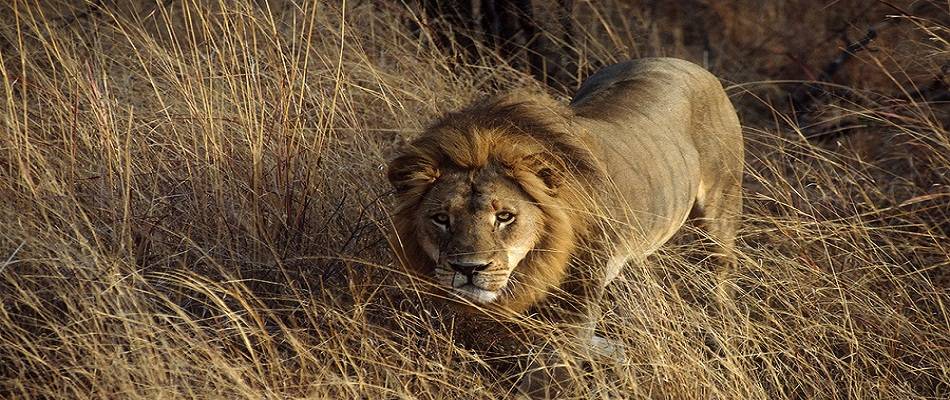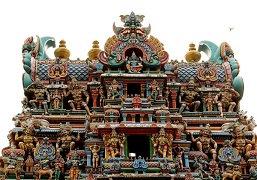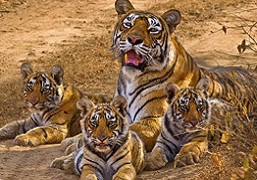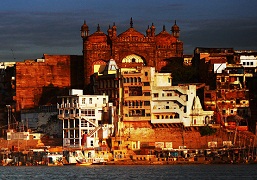Destinations Covered:- Ahamdabad – Dasada – Rann Of Kutch – Bhuj – Moti Virani – Mandvi – Jamnagar – Gondal – Gir – Velavadar – Bhavnagar – Ahamdabad
Duration:- 10 Nights – 11 Days
Gujarat is the land of the Asiatic lion and the Indian wild ass not seen elsewhere. It also has thriving populations of leopard, sloth bear, wolf, blackbuck and other mammals. Smaller mammals can be seen in the Rann of Kutch and Banni.
India’s first Marine National Park runs along the coastline of the Gulf of Kachch offering opportunities to see marine invertebrate and a variety of fish.
One of India’s most prolific areas for birdwatching, Gujarat’s wetlands attract huge congregations of birds in numbers beyond comprehension. For birders, globally-threatened species of vulture, great Indian bustard, grey hypocolius, white-naped tit, stolicza’s bushchat, are among the many interesting species to be seen. Raptors abound in the Banni grasslands and the harrier roost at Velavadar National Park is one of the world’s largest.
For herpetologists, spiny-tailed lizard can be a major attraction in the Kutch region.
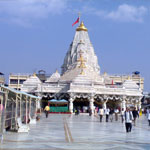 Day-1: AHMEDABAD – DASADA Arrive Ahmedabad and drive to Dasada. Late-afternoon safari in the Little Rann of Kutch, a sanctuary for the endangered Asiatic Wild Ass. the mammals of the Rann other than the wild ass, there are chances of seeing nilgai, chinkara gazelle, white-footed desert and Indian foxes, the wolf, jungle cat (occasionally also desert cat), pale and long-eared hedgehogs and hare.
Day-1: AHMEDABAD – DASADA Arrive Ahmedabad and drive to Dasada. Late-afternoon safari in the Little Rann of Kutch, a sanctuary for the endangered Asiatic Wild Ass. the mammals of the Rann other than the wild ass, there are chances of seeing nilgai, chinkara gazelle, white-footed desert and Indian foxes, the wolf, jungle cat (occasionally also desert cat), pale and long-eared hedgehogs and hare.
Crested and Sykes larks, Oriental skylark, bimaculated lark, greater short-toed lark, singing and Indian bushlarks, ashy-crowned and black-crowned sparrow-larks, are likely sightings and greater hoopoe lark is possible. Desert and variable wheatears, southern grey, long-tailed, rufous-tailed and bay-back shrike, common woodshrike are also likely sightings and the desert warbler is among the many winter visiting warblers. We will also look for chestnut-bellied and spotted sandgrouse, Indian courser (cream-coloured visits occasionally), quails, yellow-legged and barred buttonquails, grey francolin, wryneck, brown-rock chat, pied bushchat, rufous-tailed scrub robin, blue-headed rock thrush, black redstart and buntings in the scrubby areas. At sunset, it is possible to watch marsh, Montagu and pallid harriers, aquila eagles, falcons and buzzards heading for their roosting sites.
 Day-2: RANN OF KUTCH Morning drive to the bets, elevated patches in the Rann covered with scrub and grass. In winter, this is a likely area for Macqueen’s bustard. Long-legged, common and white-eyed buzzard, booted eagle, Bonneli’s eagle. short-toed snake eagle, are often seen during the drive.
Day-2: RANN OF KUTCH Morning drive to the bets, elevated patches in the Rann covered with scrub and grass. In winter, this is a likely area for Macqueen’s bustard. Long-legged, common and white-eyed buzzard, booted eagle, Bonneli’s eagle. short-toed snake eagle, are often seen during the drive.
Evening visit to Nawa Talao, a lake where demmossile and common cranes gather in large flocks during the winter months. Greater and lesser flamingo are seen in large numbers as are great white pelican with spotbilled and dalmatian recorded. Painted, openbill, wooly-necked, white, black and black-necked stork could be seen as also black, glossy and black-headed ibis. Northern pintail, common teal, spot-billed duck, mallard, gadwall, wigeon, garganey, shoveler, cotton pygmy goose, pochards, tufted duck, lesser whistling duck, brahminy and comb duck are among the many visitors to the lake. Waders include pratincoles, lapwings, sandpipers, ruff and other birds in good numbers.
Day-3: DASADA – BHUJ (267km) Drive from Dasada to Bhuj passing good wetlands and dryland bird habitats. Stay at Hotel Prince/equivalent.
Day-4: BHUJ – MOTI VIRANI (52km) Drive from Bhuj to Moti Virani. Stay at CEDO Camp, a basic facility run by a conservation organization. Visit the roost of the Grey Hypoculius at Fulay, one of the few sites where this bird is seen in India.
Day-5: BANNI GRASSLANDS Tour the Banni region, India’s largest grassland area. This is one of the important bird areas with a great concentration of aquila and other eagles. The water bodies here are known for their large flocks of waterfowl. Stay as on day-4:
Day-6: LALA BUSTARD SANCTUARY Day trip to the Great Indian Bustard Sanctuary near Naliya. These grasslands are the habitat of the endangered Indian bustard, white-naped tit, stolickza’s bushchat, and a variety of other birds. Chinkaras are likely to be seen and there are chances of seeing Indian wolf. Return to CEDO camp.
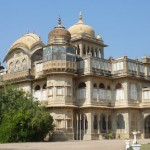 Day-7: MOTI VIRANI – MANDVI Drive to Mandvi. Tour the coastal areas for birding. Enjoy the evening at the Mandvi beach.
Day-7: MOTI VIRANI – MANDVI Drive to Mandvi. Tour the coastal areas for birding. Enjoy the evening at the Mandvi beach.
Day-8: MANDVI – JAMNAGAR (350km) Drive to Jamnagar. Evening visit to Khijadiya Bird Sanctuary, a possible site for the Indian skimmer. This sanctuary is a breeding area for many species of birds that do not nest elsewhere in peninsular India. Great-crested grebe, black-necked stork, Caspian tern and many other birds can be seen besides most of the species recorded in the Little Rann area. Stay at Hotel President.
Day-6: JAMNAGAR Visit coastal areas along the Gulf of Kutch, one of the finest birding stretches along the Indian coastline. You are likely to see crab-plover, Kentish plover, oystercatcher, ruddy turnstone, broad-billed sandpiper, sanderling, dunlin, curlew sandpiper, black-headed gull, Pallas’ gull, temmincks stint, lesser-crested tern, gull-billed tern, common tern, little tern, black-bellied tern, whiskered tern, whiskered tern, darters, western reef egret and other birds could be seen on this route. Stay at Hotel President.
Day-7: JAMNAGAR – GONDAL Travel to Gondal and check-in at the Riverside Palace/Orchard Palace. These heritage hotels are good for birding with many species coming in to the orchards and on the river-shores. Drive to the grasslands where there are chances of seeing Eurasian eagle-owl, Montagu harrier, short-eared owl, rock bush quail, ashy-crowned sparrow-lark, southern grey and rufous-tailed shrike, pipits, pied bushchat, among other birds. The lakes of Gondal attract large flocks of demmossile and common cranes, white pelicans, ducks, and other birds.
Day-8: GONDAL – GIR After breakfast, travel to Gir and take a mini-bus tour of the Interpretation Zone, an enclosed cross-section of Gir habitats. Dinner and overnight in a private orchard of Gir with a forest view.
 Day-9: GIR A tapestry of dry deciduous forests, acacia scrub and grassland, fed by rivers and reservoirs, Gir is the last abode of the Asiatic lion and has a thriving population of panther (leopard), sambar, chital (spotted deer), nilgai (blue bull antelope) and wild boar. Gir is also one of the major habitats of chousingha (the world’s only four-horned antelope) and chinkara (Indian gazelle) that are hard to spot in the teak forests along the game drive trails. Among the many birds of Gir, changeable hawk eagle, crested serpent eagle, Bonneli’s eagle, shaheen peregrene falcon, laggar falcon, shikra, painted sandgrouse, quails, black-hooded and golden oriels, marshall’s and common iora, Asian paradise flycatcher, tickell’s blue, red-throated, verditer and Asian brown flycatchers, yellow-crowned, brown-capped pygmy, black-rumped flameback woodpeckers, green and blue-cheeked bee-eaters, coppersmith barbet, common, lesser pied and white-throated kingfisher, blossom-headed parakeet, hoopoe, black, ashy and white-bellied drongos, rufous treepie, large cuckoo shrike, small minivet, red-vented and white-eared bulbul, tawny-bellied, yellow-eyed, jungle and large grey babblers, grey-breasted, ashy, rufous-fronted, plain, jungle and graceful prinias, zitting cisticola, clamorous reed-warbler, booted warbler, greenish warbler, lesser and Hume’s warbler, orphean warbler and blyth’s reed warbler, are among the many birds that could be seen here. Those interested in herpetology can visit the crocodile breeding farm at Sasan.
Day-9: GIR A tapestry of dry deciduous forests, acacia scrub and grassland, fed by rivers and reservoirs, Gir is the last abode of the Asiatic lion and has a thriving population of panther (leopard), sambar, chital (spotted deer), nilgai (blue bull antelope) and wild boar. Gir is also one of the major habitats of chousingha (the world’s only four-horned antelope) and chinkara (Indian gazelle) that are hard to spot in the teak forests along the game drive trails. Among the many birds of Gir, changeable hawk eagle, crested serpent eagle, Bonneli’s eagle, shaheen peregrene falcon, laggar falcon, shikra, painted sandgrouse, quails, black-hooded and golden oriels, marshall’s and common iora, Asian paradise flycatcher, tickell’s blue, red-throated, verditer and Asian brown flycatchers, yellow-crowned, brown-capped pygmy, black-rumped flameback woodpeckers, green and blue-cheeked bee-eaters, coppersmith barbet, common, lesser pied and white-throated kingfisher, blossom-headed parakeet, hoopoe, black, ashy and white-bellied drongos, rufous treepie, large cuckoo shrike, small minivet, red-vented and white-eared bulbul, tawny-bellied, yellow-eyed, jungle and large grey babblers, grey-breasted, ashy, rufous-fronted, plain, jungle and graceful prinias, zitting cisticola, clamorous reed-warbler, booted warbler, greenish warbler, lesser and Hume’s warbler, orphean warbler and blyth’s reed warbler, are among the many birds that could be seen here. Those interested in herpetology can visit the crocodile breeding farm at Sasan.
Day-10: GIR – VELAVADAR Early morning depart for Velavadar National Park. Known for its large blackbuck antelope population, Velavadar is also one of the few places where the wolf is proliferating in India though they are rarely seen in the daylight. Jackal, jungle cat and hare are more easily seen and Indian fox on the periphery. Sirkeer malkoha, painted francolin, chestnut-bellied and spotted sandgrouse, rufous-tailed, crested and sykes’ larks, red-rumped swallows, desert and variable wheatears and other birds are seen and many raptors visit specially short-toed snake eagle, imperial, steppe, tawny, greater and lesser spotted eagles, laggar falcon, hobby, common kestrel, red-necked falcon, peregrine falcon, white-eyed and long-legged buzzard, black-shouldered kite, shikra, Eurasian sparrow-hawk and occasionally northern goshawk. Rarities include the Stoilczka’s bushchat. In the evening, witness a massive roost of montagu, pallid and marsh harrier. Stay at Nilambag Palace/Narayani Heritage at Bhavnagar or the Blackbuck Lodge at Velavadar.
Day-11: BHAVNAGAR – AHMEDABD Morning birdwatching at Bhavnagar including the port areas, lakes and Victoria Park. Depart for Ahmedabad.

